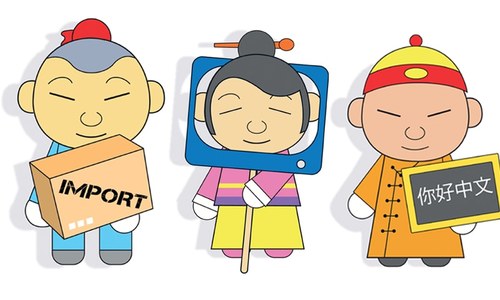Chinese Cool

Picture this: It’s the early 2000s and you have just suggested to a friend that he buy a Chinese cell phone. If he was polite (unlike many of my friends) he would have scoffed. “Chinese? Pagal hogaye ho? Why would I waste my money on a Chinese product?” To be honest, I would not have blamed him for saying so, because in those days the idea of a Chinese brand as a contender in the global market was far-fetched. However, today, Chinese brands have become household names across various product categories.
Take mobile phones. After the demise of Nokia and Blackberry, there was a time when the only options were Apple and Samsung. Today, brands like Huawei, Oppo, Realme, Vivo and Xiaomi have grabbed a substantial share of the market – both locally and internationally – and challenged the established giant’s hegemony. A remarkable shift that has shattered old perceptions and redefined the global landscape.
Historically, Chinese products have faced a slew of negative perceptions, with people believing they were synonymous with inferior quality – “Yeh toh China ka maal hai” – cheap knockoffs that lacked any innovation. “Made in China” often carried negative connotations, with jokes about products quickly falling apart.
However, times have changed, and these stereotypes no longer hold true. Chinese brands have risen to the challenge and are delivering high-quality products that rival, and in some cases, surpass their Western counterparts. From smartphones to electronics, home appliances to automobiles, Chinese brands are making their mark and earning respect.
The success stories of Chinese brands span various industries. In the automotive sector, companies like NIO, Geely and BYD, have gained international recognition for their electric vehicles. Geely’s acquisition of Volvo and its subsequent success is a testament to China’s growing influence in the automotive world internationally. The same can be said of the Pakistani market, where with the introduction of brands like BAIC, Changan, Chery, DFSK and Haval. One may argue that it will take time before they pose a serious threat to the Japanese or Koreans, but in my opinion, it’s not a matter of if, but rather of when, as we have seen in the case of the local cell phone market.
In technology and consumer electronics, brands like DJI (known for their drones), Lenovo (a leader in personal computers) and TCL (high-quality televisions) have made significant inroads globally. Chinese brands have not only caught up, they have surpassed expectations, challenging established players and gaining recognition for their innovative products.
So, what establishes the perception of a brand and its products? In a cutthroat world of competition, it boils down to three factors: quality, innovation and customer experience. Recognising this, Chinese brands have made significant strides in each area.
Firstly, quality is no longer a concern. Chinese brands have invested heavily in R&D, manufacturing processes and quality control, and today it is not uncommon to find Chinese products that match or even surpass the quality of their Western counterparts which are often manufactured in China. A major reason for this improvement in quality can be attributed to an increased shift in demand for local rather than western brands by Chinese consumers for whom the novelty of foreign brands has worn off and been replaced by a sense of patriotism associated with buying local. According to an article in Forbes, in 2011, 70% of smartphone sales in China came from Apple, Nokia and Samsung, but currently, eight of the top 10 smartphone brands are Chinese, with Huawei, Oppo and Xiaomi in the top spots. According to a 2016 McKinsey report, over 62% of Chinese consumers prefer Chinese brands over foreign ones if the quality and price are perceived to be the same. This increase in volume demand for local products has allowed local manufacturers to reinvest in their quality-related processes.
Secondly, Chinese brands have shed their reputation as copycats and have become synonymous with innovation. They may have started with making ‘me too’ imitations of western brands, but they have moved beyond this and become pioneers in their own right. Take Xiaomi; while the company initially gained attention for emulating Apple, it quickly evolved into a powerhouse of original ideas and cutting-edge technology, offering consumer electronics across a wide range of categories. Then there is Tiktok, the fastest growing social media app in the world. Tiktok’s global success can be largely attributed to its innovative short-form videos and smart backend algorithm that has redefined content creation and consumption. Chinese brands have embraced innovation as a core value, leading to breakthroughs in various industries. They are no longer playing catch-up; they are setting the pace and driving global trends.
Thirdly, Chinese brands have recognised the importance of providing exceptional customer experiences. They understand that it is not just about the product but about the overall brand experience. Companies like Alibaba have revolutionised the e-commerce landscape, making online shopping a seamless and enjoyable experience for millions of consumers worldwide. Brands like Shein have adopted a customer-centric approach, focusing on convenience, speed, and personalised service. Another example is NIO, an EV manufacturer, which has come to be known as the Tesla of China. Along with a fast-charging infrastructure, what sets NIO apart from Tesla and other local competition is their battery swapping technology; unlike regular EVs, which need to be charged anywhere between 20 to 40 minutes, NIO vehicles are configured as such that you can visit any of their battery swapping stations and have your battery swapped with a fresh one in less than three minutes. If this weren’t enough, the brand offers emergency assistance and concierge services; their showrooms, called NIO Houses, are more like clubhouses for owners and their friends and are equipped with cafés, libraries and lounges if they want to relax while their car is being serviced.
It is safe to say that Chinese brands have learned from the successes and failures of their Western counterparts and have taken their quality, innovation and customer experience to new heights.
Looking ahead, the future for Chinese brands seems promising. With a massive domestic market, abundant resources and a strong focus on innovation, these brands are poised for growth. Their success at home has given them a solid foundation to venture into international markets, where they can leverage their competitive pricing and advanced technology to gain a foothold.
Challenges, however, still lie ahead. Chinese brands need to continue to innovate and maintain their commitment to quality to stay ahead of the curve as well as overcome residual doubts.
To conclude, Chinese brands have defied expectations. From being dismissed as inferior and cheap, they have emerged as powerhouses of quality, innovation and customer experience. From imitators they have become innovators, establishing their presence across industries and challenging established players.
Shahzeb Hasan is a marketing and brand professional from IBA and LUMS. He has over seven years of experience working in brand and product management across multiple industries.
syedshahzebhasan@gmail.com



Comments (18) Closed